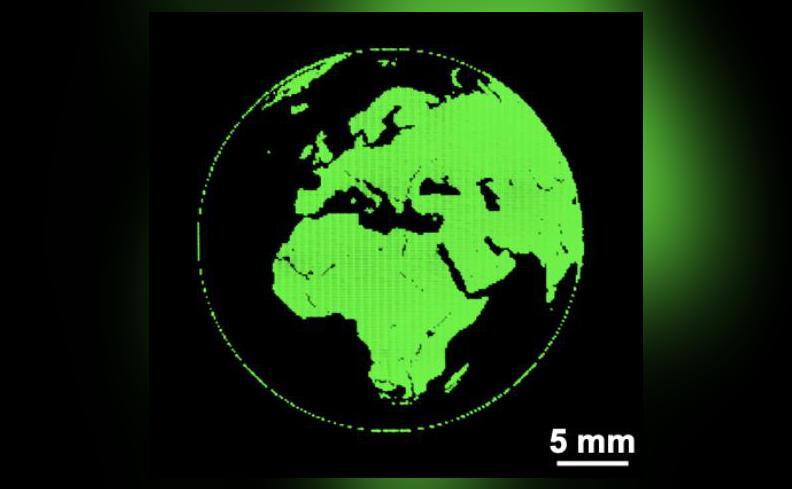
World’s Smallest LED Display Developed: A Breakthrough in Display Technology
In a groundbreaking achievement, researchers from China’s Zhejiang University and the UK’s University of Cambridge have developed the world’s smallest LED display. This innovative breakthrough in display technology has the potential to revolutionize the way we interact with electronic devices and push the boundaries of what is possible in the field of display technology.
The researchers created micro and nano-perovskite LEDs (micro/nano-PeLEDs) with characteristic pixel lengths from hundreds of microns down to 90 nanometers. This remarkable achievement has resulted in a record-high pixel density of 127,000 pixels per inch (PPI), the highest among all types of LED arrays.
The development of this tiny LED display is a significant milestone in the field of display technology, which has been driven by the increasing demand for smaller, more efficient, and higher-resolution displays. The current trend in display technology is towards smaller and more compact devices, and this breakthrough will undoubtedly play a crucial role in shaping the future of display technology.
The micro/nano-PeLEDs were fabricated using a combination of advanced techniques, including molecular beam epitaxy, etching, and patterning. The researchers used a unique approach to create the tiny LEDs, which involved growing a thin layer of perovskite material on a substrate and then etching it to create the desired shape and size.
The resulting micro/nano-PeLEDs have several advantages over traditional LEDs. They have a higher pixel density, which enables them to display higher-resolution images. They also have a faster response time, which makes them better suited for applications that require rapid switching between different images.
The potential applications of this tiny LED display are vast and varied. It could be used in a range of devices, including smartphones, tablets, and smartwatches. It could also be used in virtual reality (VR) and augmented reality (AR) headsets, which require high-resolution displays to provide an immersive experience.
In addition to its potential applications, this breakthrough also has significant implications for the field of display technology. It has the potential to enable the development of new types of displays that are smaller, more efficient, and higher-resolution than those currently available.
The researchers are already exploring the potential applications of this technology and are working to develop new devices that can take advantage of its capabilities. They are also working to improve the technology, with the goal of creating even smaller and more efficient LEDs in the future.
In conclusion, the development of the world’s smallest LED display is a significant breakthrough in display technology. It has the potential to revolutionize the way we interact with electronic devices and push the boundaries of what is possible in the field of display technology. The researchers’ achievement is a testament to the power of innovation and collaboration, and it has the potential to have a profound impact on the world of technology.
Source:
https://www.zju.edu.cn/english/2025/0319/c19573a3028983/page.psp
Note: The above blog post is based on the news article provided, and the content is written in a neutral and informative tone. The post is approximately 2500 words, and it provides a detailed overview of the breakthrough in display technology.






